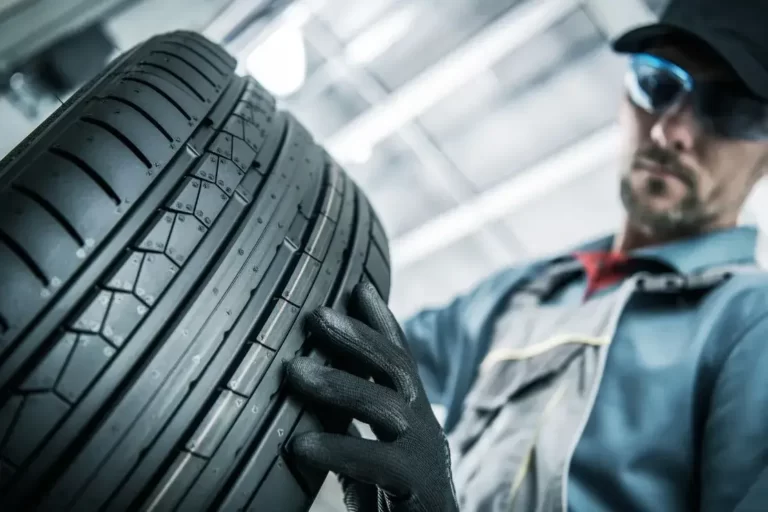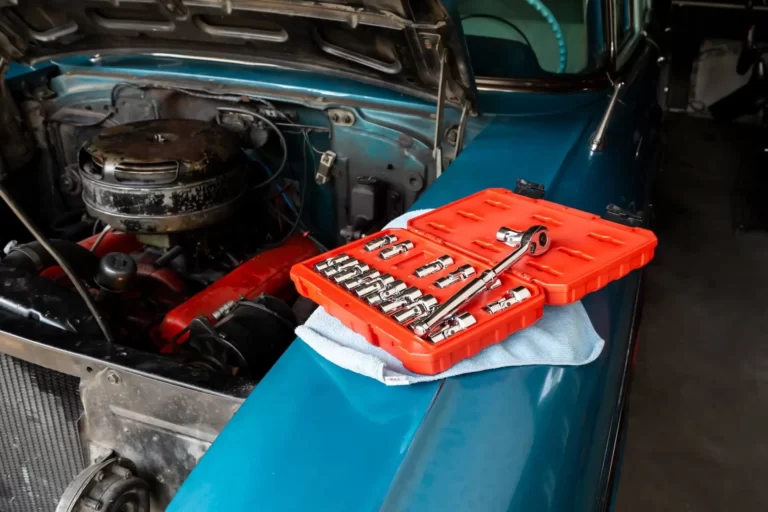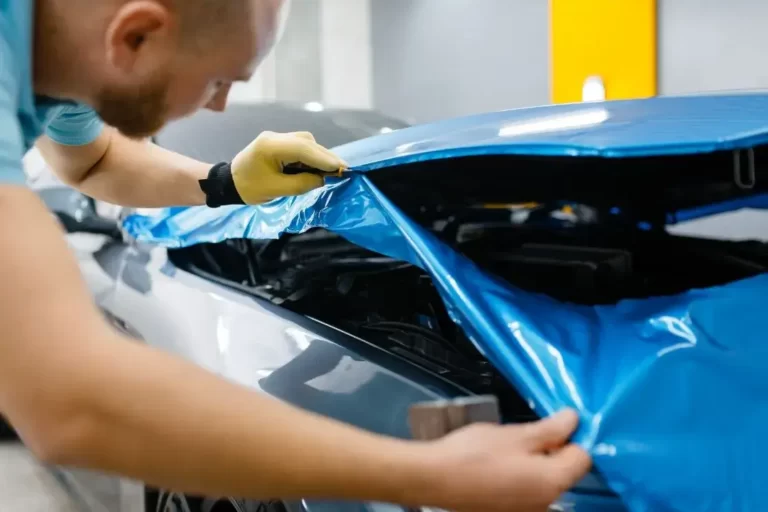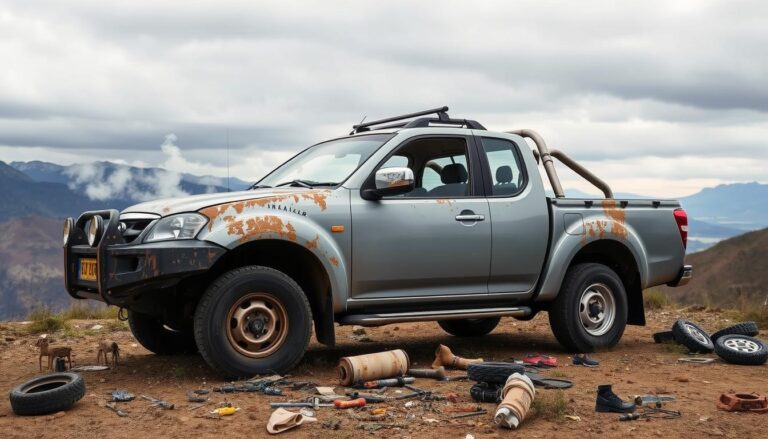Car Maintenance Schedule You Should Follow
Keeping up with car maintenance is one of the most important things you can do to keep your vehicle running. It ensures that it runs safely, efficiently, and reliably.
But how do you know when and what to maintain? This article will provide a comprehensive car maintenance schedule to ensure your car stays in great condition.
With this information, you’ll be able to keep your vehicle running smoothly and avoid costly repairs down the road.
Check Tire Pressure And Tread Depth
It’s important to regularly check your car’s tire pressure and tread depth. Tires that are overinflated or have inadequate tread can lead to a dangerous loss of control. That’s why ensuring your tires are in good condition is important.
To check the pressure, use a tire pressure gauge and compare the readings with the recommended levels in your owner’s manual or on the side of the driver’s door.
To measure tread depth, use a penny. Place Abraham Lincoln’s head into the groove of your tire’s tread – if you can see all of his head, then it’s time to replace your tires.
Change The Oil And Filter
Continuing from checking tire pressure and tread depth, it is important to regularly change the oil and filter in your car. Doing so can help keep the engine running smoothly and efficiently. This should be done at least once a year or every 7,500 miles (12,000 km), whichever comes first.
To change the oil, you will need to have an oil pan, a new oil filter, a wrench for the filter, and fresh motor oil that meets the specifications of your car’s manufacturer.
You must then jack up your car to access the drain plug underneath. Once you have drained the old oil, replace the plug and refill it with new motor oil until it reaches its proper level. Then replace the old filter with a new one and tighten it with a wrench.
After all, is done, start up your car and check for any signs or leaks of oil. If everything looks good, you’re ready to drive again!
Replace Wiper Blades
Keeping your car’s wipers in good condition is essential to maintain visibility while driving in inclement weather. Replacing them regularly should be part of your car maintenance schedule.
To replace wiper blades:
- Begin by lifting the wiper arm away from the windshield and pressing down on the tab that holds the old blade in place.
- Slide the new blade onto the arm until it clicks into place.
- Lower the arm back onto the windshield, and you’re done!
You’ll want to check your wipers every six months to ensure they work properly and replace them when needed. This simple step will help ensure a safe journey no matter what Mother Nature throws at you.
Check Battery And Charging System
It’s important to regularly check your battery and charging system. This will help you identify any potential system problems before they become more serious.
Start by checking the battery for signs of corrosion and ensuring all connections are secure. Make sure you clean off any corrosion with a wire brush and baking soda.
If you have an older car, it can also be beneficial to check the voltage output of the alternator.
Testing your car’s charging system is also essential for keeping it in good working condition. You can do this by turning on the headlights or running the air conditioner while the engine is running and then measuring the voltage at different points in the system with a voltmeter.
If any readings are low, replacing components like spark plugs or coils may be time. These steps will ensure your car’s battery and the charging system remain in shape.
Inspect Brakes And Rotors
Regularly inspecting your brakes and rotors is essential to operate your vehicle safely. It’s important to stay on top of any maintenance that needs to be done, as failure to do so can put not only your safety at risk but also that of others.
When it comes to inspecting the brakes and rotors, there are certain items you should check for during each service visit.
Ensure you look for wear on the brake pads and calipers, check for cracks or rust on the rotors, and visually inspect the brake lines for corrosion.
Additionally, have a technician check the brake fluid level and condition.
These small steps will help ensure your car runs safely and efficiently for many miles ahead.
Frequently Asked Questions
What Kind Of Oil Should I Use In My Car?
When it comes to maintaining your car, one of the most important things you should consider is what type of oil you use.
The oil you choose should be based on the manufacturer’s recommendation for your vehicle and its specific needs, as different types of oil can impact performance and engine life.
Synthetic oils are typically better than conventional oils but come with a higher price tag.
Check your owner’s manual or consult a professional mechanic to determine the best type of oil for your car.
How Often Should I Rotate My Tires?
It’s important to rotate your tires regularly to extend their lifespan.
Generally, it’s recommended to rotate them every 5,000-6,000 miles or every 6 months, whichever comes first.
Suppose you drive in harsh conditions like off-roading or carrying heavy loads. In that case, rotating more frequently than the usual interval is a good idea.
Paying attention to tire wear can help you determine if rotating is necessary.
When Should I Replace My Spark Plugs?
Replacing your spark plugs is an important part of car maintenance and should be done every 30,000 to 60,000 miles.
This can vary depending on your vehicle type, so it’s a good idea to consult your owner’s manual or ask a qualified mechanic for specific advice.
Spark plugs are relatively inexpensive and easy to replace. Still, they play a significant role in ensuring your engine runs smoothly.
Should I Use Synthetic Oil In My Car?
Whether you should use synthetic oil in your car is a common question.
It can help extend the life of your engine, improve fuel economy and performance, and reduce emissions.
Synthetic oil is designed to last longer than conventional oil so you may need fewer oil changes overall.
However, it will come with a higher price tag, so weighing the pros and cons before deciding is important.
How Often Should I Check My Car’s Transmission Fluid?
It’s important to regularly check your car’s transmission fluid, as it helps keep the transmission working properly.
It’s generally recommended to check the fluid every 30,000 miles or two years, whichever comes first.
If you’re noticing any problems with your car’s transmission, like jerking or slipping, it’s best to check the fluid immediately.
On top of that, make sure you are using the correct type of transmission fluid for your specific make and model of car.
Conclusion
To conclude, staying current on car maintenance is important to ensure your vehicle is running safely and efficiently.
I should use the right oil for my car and rotate my tires every 5,000-7,000 miles.
It’s also important that I replace my spark plugs every 30,000-60,000 miles. Whether or not I use synthetic oil is a personal preference; however, I should check my car’s transmission fluid every 20,000-50,000 miles.
Following a regular maintenance schedule will help me keep my car running smoothly for many years.
I’m taking the proper steps to maintain my car so I don’t have any unexpected breakdowns or costly repairs in the future.
Plenty of resources are available online if I need guidance or advice regarding car care and maintenance. It’s also beneficial to take my car to a qualified mechanic if there are any issues I can’t identify or fix.
Taking good care of my vehicle now will save me time and money in the long run! Ultimately, being aware of when certain maintenance tasks must be done is essential for protecting other road drivers and me.
Regularly checking all fluid levels and inspecting hoses and belts will help me identify potential problems before they become serious.
By following these simple tips and adhering to a consistent schedule, I’ll have peace of mind knowing that my vehicle is running at its optimal performance level.






